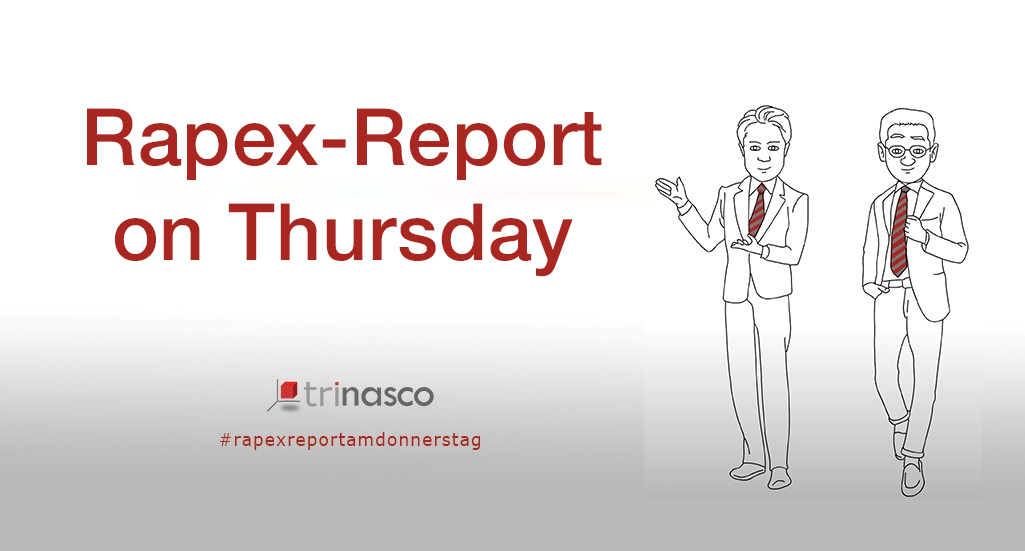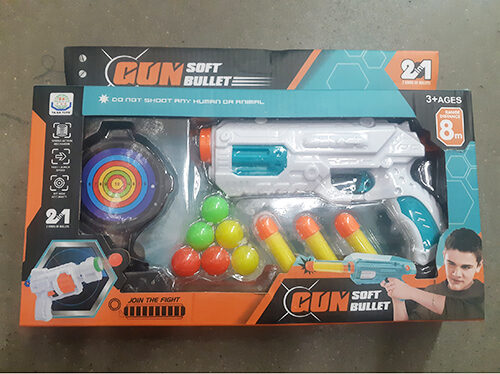
n June, more than 250 dangerous products were once again entered into the European Union’s Safety Gate system. Through this information system, formerly known as the RAPEX system, market surveillance authorities of the member states inform each other about dangerous products. Based on this information, the authorities of the individual member countries can take appropriate measures, including refusing the products at the border.
Nearly one in three of the reported products in June fell into the category of cosmetics (31%), followed by toys (13.4%), motor vehicles (12.3%), and electrical appliances. Jewelry (7.3%) and pyrotechnic items (5%) also had relatively high proportions in June.
Once again, nearly half of the products (44.4%) originated from China. Due to the high number of cosmetics, Italy ranked second among the countries of origin with 17.6%. The remaining products were fairly evenly distributed across 18 other countries.
Almost every second product (40.6%) had to be recalled by the responsible manufacturers, importers, or distributors, a significantly higher rate than in previous months. In June, 25.7% of the reported products were sold online.
Due to the focus on cosmetics, most of the products were again reported in June by the Italian market surveillance authorities, followed by Germany, France, Sweden, and the Netherlands.
Products that do not comply with EU regulations can have devastating consequences for companies. In addition to considerable financial burdens, there is also the threat of long-term damage to the reputation of manufacturers, importers, or retailers. According to a study by Allianz, recalls of electrical appliances or toys can incur costs between €650,000 and €1,000,000. Even for medium-sized deliveries, import bans can lead to expenses of €50,000 to €100,000, in addition to fines for customers and significant damage to the company’s image.
By implementing effective compliance strategies, companies can significantly reduce the likelihood of product or labeling errors and identify potential risks at an early stage. Regular spot checks ensure that products are continuously monitored for conformity with applicable standards. Seamless documentation not only provides proof of compliance but also enables a quick and efficient response in the event of recalls or investigations.
We therefore strongly advise our customers to proactively invest in their compliance strategies. Only in this way can they protect themselves from the serious consequences that can arise from non-compliant products.
In June, cosmetics once again topped the list of hazardous products with over 80 reports. As in previous months, over 95% contained the product 2-(4-tert-butylbenzyl) propionaldehyde (BMHCA), which is banned in cosmetic products according to the respective ingredient lists. BMHCA can damage the reproductive system, harm the health of the unborn child, and sensitize the skin.
As in previous months, the Italian market surveillance authorities led the investigations. More than 50% of the cosmetics analyzed came from Italy itself, with a further 28% coming from France, China, and the United Kingdom.
In June, the French market surveillance authorities apparently paid increased attention to the testing of toys. One in four of the toys that were flagged were placed on the Safety Gate by France. 82.9% of these products originated from China, and almost 6 out of 10 products had to be recalled by the responsible market players to the end consumer.
The most common hazards were suffocation (45.7%), chemicals (25.7%), and injuries, including strangulation (22.9%).
A toy gun set contained numerous small parts that could be a choking hazard if small children put them in their mouths. The product did not comply with the requirements of the Toy Safety Directive or the European standard EN 71-1. The product, reported by the Lithuanian authorities, must be withdrawn from the market.

Fig. 1: Toy gun set with small dangerous parts
Source: European Commission, https://ec.europa.eu/safety-gate-alerts/screen/webReport/alertDetail/10013533?lang=de , Date: 2.07.2024, Language: German
The Hungarian and Lithuanian authorities criticized the inadequate load-bearing capacity of three different toy prams. These prams could easily collapse, posing a risk of injury to children. All three products violated not only the requirements of the Toy Safety Directive but also the European standard EN 71-1.
In Lithuania, the product must be withdrawn from the market and can no longer be sold. In Hungary, the products were rejected directly at the border.

Fig. 2: Fragile toy pushchair
Source: European Commission, https://ec.europa.eu/safety-gate-alerts/screen/webReport/alertDetail/10013360?lang=de, Date: 2 July 2024, Language: German
The Hungarian market surveillance authorities discovered an excessive concentration of bis(2-ethylhexyl) phthalate (DEHP) (measured value up to 16% by weight) in the head of a toy set containing a plastic doll, bathtub, and bath toy. This phthalate can harm children’s health and potentially damage their reproductive system.
The product was not in compliance with the REACH regulation and must be withdrawn by the distributor and recalled from end users.

Fig. 3: Toy set with high phthalate content
Source: European Commission, https://ec.europa.eu/safety-gate-alerts/screen/webReport/alertDetail/10013524?lang=de, Date: 2.07.2024, Language: German
The German market surveillance authorities were particularly active in the area of jewelry and reported 14 products. Of the 19 pieces of jewelry reported, 16 contained excessively high concentrations of cadmium. Cadmium is harmful to human health because it accumulates in the body, can damage the kidneys and bones, and cause cancer.
In the other 3 products, the amount of nickel released was too high. Nickel is a strong sensitizing agent and can cause allergic reactions when present in items that come into direct and prolonged contact with the skin.
17 of the 19 products came from China, 16 were sold online, and 14 were subject to a product recall.

Fig. 4: Brooch with excessive cadmium concentration
Source: European Commission, https://ec.europa.eu/safety-gate-alerts/screen/webReport/alertDetail/10013207, date: 2 July 2024, language: German

Fig. 5: Jewellery beads with a nickel release limit that is too high
Source: European Commission, https://ec.europa.eu/safety-gate-alerts/screen/webReport/alertDetail/10013493, Date: 2.07.2024, Language: German
Pyrotechnic articles are a product group that otherwise appears less frequently in the Safety Gate. In June, 10 different products were criticized and reported by the Dutch market surveillance authorities and 3 by the Danish authorities. 12 of the dangerous products came from China.
The sound pressure level of 4 products was too high, and 4 other products had no or insufficient safety devices. Other products were unstable and could fall over, emit flames, or spray excessive amounts of combustion particles. Some products exhibited several of these hazards simultaneously.
One product not only had an excessively high sound pressure level (measured at over 130 dB), which can lead to hearing damage, but it also dispersed excessive amounts of combustion fragments outside the safety distance, posing risks of injuries and/or burns to users or bystanders, or even causing a fire.

Fig. 5: Dangerous fireworks
Source: European Commission, http://ec.europa.eu/safety-gate-alerts/screen/webReport/alertDetail/10013423, date: 2 July 2024, language: German
None of the products met the requirements of the Pyrotechnics Directive and the European standard EN 15947. Ten of the products must be recalled from end users by the responsible importers or distributors, and eight must also be destroyed.
Do you offer toys, electrical goods, jewelry, or fireworks?
How confident are you that all the risks associated with your products are fully considered?
How do you ensure that you are aware of and comply with current standards?
Have you prepared a risk analysis for all your products that you can provide to authorities upon request? Are all your suppliers familiar with the requirements of the REACH or CLP regulations and the relevant harmonized European standards?
Do you have complete technical documentation for all your products as required by the new Product Safety Regulation?
Do you have meaningful tests and documents from your suppliers regarding the chemical and electrical components of your products?
How well prepared are you for a product recall, and do you have a product recall management system in place?
If you see a need for action here, we are happy to assist you in identifying potential risks and avoiding additional costs due to dangerous products. We support you in establishing an appropriate risk management system and guide you through the conformity assessment process, including the preparation of technical documentation, risk analyses, and EU declarations of conformity.
What do we need to do now?
Book our free initial consultation now.
Save €249!!